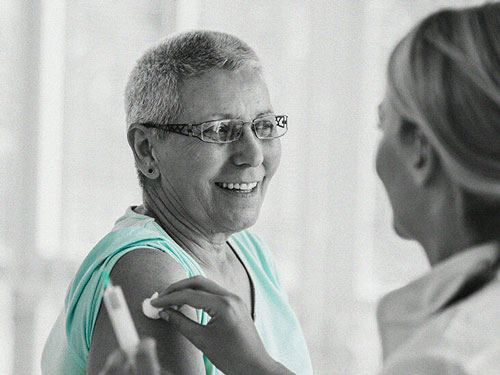A recent study finds that both smiling and grimacing could reduce the sensation of pain associated with a “vaccination-like needle injection.” A sincere smile also reduced stress-induced physiological responses in participants.
When humans face acute pain, they tend to close their eyes tightly, raise their cheeks, and bare their teeth. Certain animals use similar facial expressions, which experts often call the grimace response.
As the authors of the recent study explain, “these facial musculature changes can also have a different interpretation: smiling.”
Why these two expressions, which occur for very different reasons, should share so many aspects is unclear. Researchers from the University of California, Irvine School of Ecology recently set out to “test whether these facial movements are beneficial in the context of stress and pain.”
Specifically, they wanted to understand whether manipulating participants’ facial expressions during a needle injection might impact their experience of pain and associated stress levels.
The researchers’ findings appear in the journal Emotion.
For many years, scientists have been interested to understand the impact of facial expressions on pain perception and mood. The facial feedback hypothesis, for instance, states that activating facial muscles can enhance or reduce emotional experiences. These effects on emotion can occur even if researchers manipulate a participant’s facial muscles into an expression.
As the authors of the recent study explain, “feigning a smile, whether conscious or not, may alter emotions in a positive way.”
To investigate possible links between facial expression and pain sensation, the researchers recruited 231 participants. The participants all received a shot of saline solution using a needle similar to those used to deliver a flu vaccine.
Before the injection, participants completed a questionnaire that asked how anxious they were about the needle.
As the participants held their facial expressions, a medical practitioner administered the saline injection. Once the practitioner had applied a bandage, the participant removed the chopsticks from their mouth and completed a questionnaire about how much pain they were experiencing.
After 6 minutes of rest, the participants once again reported their pain levels. The researchers also asked them how stressful the experience was.









